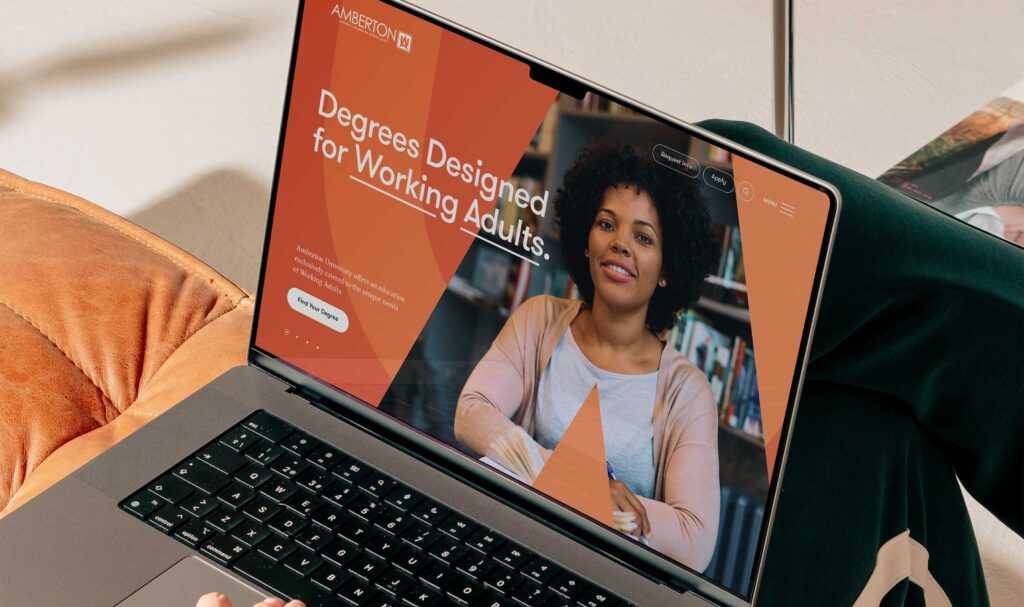In 2025, the role of a college or university website has evolved from being just an informational hub to a dynamic, interactive platform that can drive enrollment and boost donations.
With increasing competition and a rapidly shifting landscape in higher education, institutions must leverage their websites strategically to meet these goals. Here’s how colleges and universities can harness the power of their websites to attract students and donors alike.
Personalized User Experience for Prospective Students
In 2025, prospective students expect personalized experiences, not just generic content. Colleges and universities need to harness data and artificial intelligence (AI) to tailor the website experience based on the visitor’s behavior, interests, and stage in the decision-making process.
Dynamic Content: Use data-driven algorithms to present customized content. If a student is exploring business programs, the website can highlight faculty interviews, student testimonials, and alumni success stories in that field. Personalized pop-ups, offers, and calls to action (CTAs) can guide the student toward the next step—whether it’s scheduling a campus tour, signing up for a webinar, or submitting an application.
Smart Chatbots and Virtual Assistants: AI-powered chatbots are no longer just basic FAQ tools. These advanced systems can guide prospective students through the entire process, from understanding admissions criteria to exploring financial aid options. Virtual campus tours powered by AI can further enhance engagement by offering 24/7 access to information.
Virtual Reality (VR) and Augmented Reality (AR) Experiences: For students unable to visit campuses physically, VR and AR can simulate an immersive campus tour. In 2025, these technologies will be more accessible and can provide prospective students with a highly engaging and realistic experience that mimics the feeling of actually being there.

Streamlined Application and Admissions Process
Simplicity is key when it comes to the admissions process. In 2025, students will expect a seamless, user-friendly, and mobile-optimized application experience.
Mobile-First Design: With the majority of younger audiences accessing websites via mobile devices, ensuring that the admissions process is mobile-friendly is non-negotiable. Simple forms, easy document uploads, and clear calls to action can help students complete applications quickly and with minimal frustration.
Automated Follow-Ups: After students submit their applications, automated, yet personalized, follow-up emails or messages can keep them engaged and informed. This can include updates on their application status, reminders for upcoming deadlines, or even suggestions for additional programs or scholarships they may not have considered.

Showcasing Campus Life and Success Stories
Students don’t just want to know about programs; they want to feel the vibe of the campus and see themselves thriving there. A website can tell the story of campus life, highlighting student experiences, opportunities for extracurricular involvement, and the post-graduation success of alumni.
Student Testimonials and User-Generated Content: Content created by students, such as blog posts, videos, or Instagram takeovers, can give prospective students an authentic view of daily life on campus. A collection of diverse voices—academic, social, and extracurricular—can resonate with a wide audience.
Alumni Success Stories: Highlighting the achievements of alumni in both their professional and personal lives can inspire prospective students. Use interactive, multimedia features to create compelling narratives that show the impact of a degree from your institution.
Live Webinars and Virtual Events: Hosting live webinars with faculty, current students, and alumni can create real-time engagement. These events can give prospective students the opportunity to ask questions, interact with the community, and get a deeper understanding of what makes the institution unique.

Integrated Giving and Donation Platforms
Colleges and universities are increasingly turning to their websites as key tools for fundraising. In 2025, the giving process should be as seamless and engaging as possible.
Integrated Donation Options: Make donating easy with prominent, clearly marked donation buttons and simple, intuitive donation forms. Offer a variety of giving options—one-time gifts, monthly giving programs, and even options to contribute to specific programs, scholarships, or departments.
Personalized Giving Campaigns: Much like the personalized experience for prospective students, donors can be engaged with tailored giving opportunities. Use CRM (Customer Relationship Management) data to target specific donor segments—alumni, parents, friends of the institution—with campaigns that resonate with their connection to the school.
Storytelling for Impact: Just as prospective students are motivated by the success stories of alumni, donors are often driven by impact stories. Showcase how donations are being used to advance scholarships, research, campus infrastructure, and community programs. Donors want to see their money making a real difference.
Recurring Donation Programs: Offer incentives for recurring donations, such as exclusive content, donor recognition, or behind-the-scenes access to university events. A recurring giving option should be easy to set up and manage directly on the website, allowing donors to feel they are making an ongoing impact.
Search Engine Optimization (SEO) and Content Strategy
To increase both enrollment and donations, your institution’s website needs to be easily found online. Effective SEO strategies will ensure that your website ranks high in search results for key terms related to admissions, scholarships, and donations.
Targeted Content for SEO: Develop content that answers prospective students’ questions and positions your university as a thought leader. This includes blog posts, videos, and infographics that address common concerns about the admissions process, the cost of tuition, career outcomes, and student life.
Local and Regional SEO: Optimize for local search terms such as “top universities in [city or region]” or “best programs in [specific field].” A geographically targeted content strategy can help draw in students from specific areas.
Long-Tail Keywords and Intent-Based Searches: Focus on long-tail keywords related to specific programs or interests. For example, a prospective student interested in environmental science should be able to find your program through a search like “best environmental science degree programs 2025.” Tailoring content to what prospective students are actually searching for will improve organic traffic.
Enhanced Analytics for Data-Driven Decisions
Data is critical to improving both enrollment and donation efforts. Colleges and universities should use web analytics to track user behavior, identify where students or potential donors are dropping off, and fine-tune the website for maximum conversion.
Heatmaps and A/B Testing: Tools like heatmaps allow you to see where visitors are spending the most time on your website. A/B testing can help optimize calls to action, application forms, and donation buttons, ensuring that every part of your website is as effective as possible.
Lead Scoring and Conversion Tracking: Use CRM tools to score leads (prospective students and donors) based on their interactions with the website. This data allows the institution to prioritize outreach efforts and create more targeted campaigns.
2025 should be a year when colleges and universities look to use their websites as a dynamic, personalized portal that helps prospective students make informed decisions and inspire donors.
Let’s work together to create something extraordinary. Contact us today!
Contact UsRecent Insights
Push10 Sponsors HighEdWeb 2025: Empowering Higher Education through Web Innovation
By partnering with HighEdWeb, Push10 is reaffirming our commitment to empowering higher education institutions to leverage their websites as powerful tools for growth and success.
20
Sep

20
Sep


